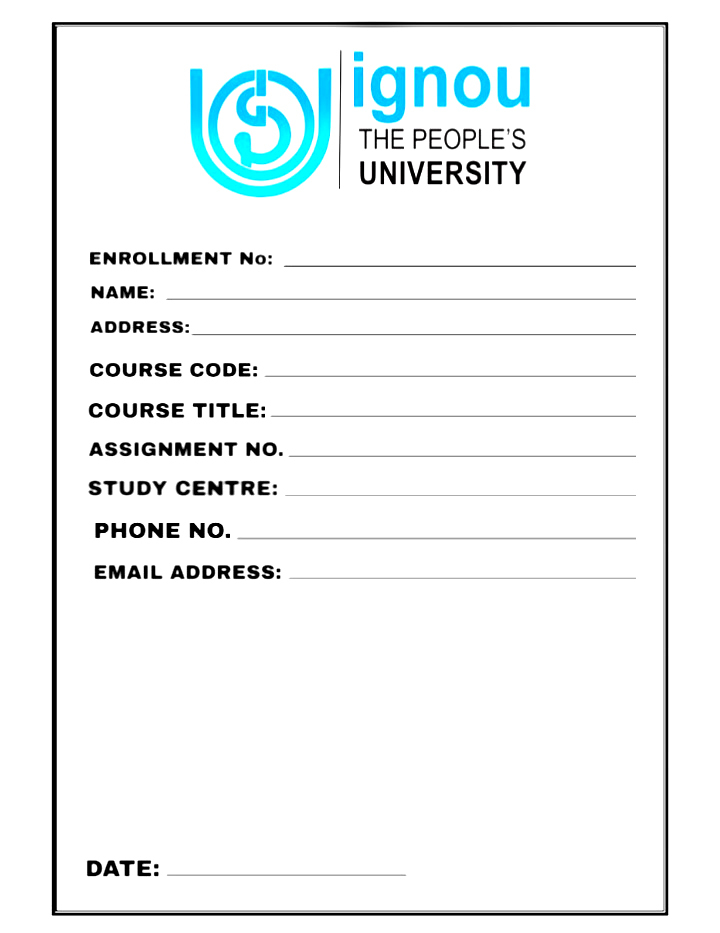About Me
Writing an IGNOU synopsis requires careful attention to its fundamental components. A properly formatted synopsis enhances your chances of acceptance and sets a strong foundation for your research. This detailed guide will walk you through all the crucial parts of an IGNOU synopsis and how to write them perfectly.
1. Title Page
The cover page is the first element of your IGNOU synopsis and must include:
Full title of the research study
Your name and registration details
Details of your guide
Course name and code
Date of submission
Example Title:
"Impact of Social Media on Buying Patterns in India"
2. Introduction
This section gives background for your research and should:
Explain the research problem
State the rationale of the study
Emphasize the significance of the research
Be brief (1-2 pages)
Effective Introduction Example:
"With the rapid growth of online shopping, understanding consumer behavior has become critical for businesses. This study seeks to analyze how social media campaigns influence buying habits."
3. Research Objectives
Your objectives should be:
Specific and measurable
Aligned with your research hypotheses
Realistic within IGNOU's timeframe
Example Objectives:
To analyze the correlation between social media usage and customer retention.
To compare the impact of Facebook ads versus print advertising.
4. Hypotheses
These direct your study and should be:
Directly related to your aims
Answerable within limitations
Focused (avoid vague questions)
Examples:
How does digital advertising influence Gen Z purchasing habits?
What factors determine the performance of influencer endorsements?
5. Theoretical Framework
This section summarizes existing research on your topic and should:
Cover key studies related to your research
Identify gaps in current literature
Show how your study adds to the field
Include recent sources (last 5-10 years)
Writing Tip:
Organize your literature review thematically for better structure.
6. Research Methodology
This important section details how you will conduct your research:
6.1 Type of Study
Mixed-method approach
Experimental research
6.2 Sources
Primary data sources
Observations
6.3 Participants
Number of respondents
Sampling method (random, stratified, etc.)
6.4 Tools
Statistical analysis methods
Tools used (SPSS, NVivo, Excel, etc.)
7. Expected Outcomes
This section explains the anticipated results of your research:
How will it benefit industry?
What new insights will it provide?
How does it fill gaps in existing research?
8. References
Your synopsis must include proper references:
Follow IGNOU's required citation style (APA, MLA, Harvard, etc.)
Include at least 15-20 academic sources
Avoid Wikipedia sources
Example Reference (APA Style):
Smith, J. (2020). Social Media and Consumer Behavior. Journal of Marketing Research, 15(2), 45-60.
9. Appendices (If Applicable)
Include supplementary materials such as:
Survey forms
Consent forms
Charts not included in the main text
10. Formatting Guidelines
Ensure your synopsis meets IGNOU's formatting requirements:
Font: Times New Roman, size 12
Line spacing: 1.5 or double-spaced
Margins: 2.54 cm on all sides
Page limit: Typically 10-15 pages
File format: PDF as specified
Common Mistakes to Avoid
Many students make these errors in their IGNOU synopsis:
Vague research objectives
Inadequate literature review
Overambitious methodology
Improper citation style
Ignoring IGNOU's formatting guidelines
Conclusion
A well-structured IGNOU synopsis demands careful attention to all its essential elements. By following this guide, you can develop a strong synopsis that meets IGNOU's standards and sets the stage for successful research.
For additional assistance, always consult your IGNOU study center before submission.
Location
Occupation

